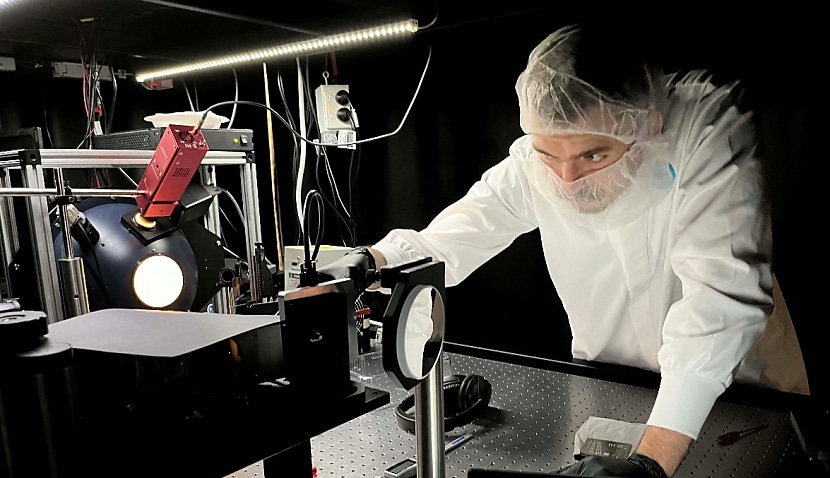
CyanoSat, created with researchers at the University of Adelaide, is the first Australian-designed and built hyperspectral imager.
Hyperspectral imaging analyses the composition of materials and is being used by CSIRO to differentiate harmful cyanobacteria from other algae in coastal and inland water bodies.
Built in just 18 months, the CyanoSat device “piggybacked” aboard a Skykraft satellite that launched in June.
Dr Stephen Gensemer, the project leader, hailed the achievement and said the team had to contend with working during lockdowns and a shortage of electronic parts.
“There were times we couldn’t travel or even go to work in our own labs, but the passion of the team and the support of our partners was crucial,” he said.
Aside from successfully generating its first image, the CyanoSat payload has tested its onboard electronics, short burst image captures, remote reprogramming, and onboard processing algorithms.
“This data shows us that here in Australia, we can design and build a sophisticated payload, custom-built for a specific application, integrate it into a satellite, and have it operating on orbit all within a very short period of time,” Dr Gensemer said.
The technology has applications beyond just satellites – the team is also investigating imagers for uncrewed aerial vehicles and high-altitude balloons.
CyanoSat was launched in June on board a SpaceX Falcon 9 rocket from Vandenburg Space Force Base in California in collaboration with Skykraft. The business is best known for launching pioneering satellites that can monitor air traffic from space.
Dr Doug Griffin, Skykraft’s chief engineer, said, “The collaboration is a great example of how an Australian space company can support new research of national significance by piggybacking off our commercial air traffic management constellation development.”
The positive Earth observation development comes despite a tough 12 months for the local industry.
Earlier this year, the federal government announced it would scrap a flagship $1.2 billion EO project called the National Space Mission for Earth Observation (NSMEO).
NSMEO aimed to improve bushfire detection but was announced by the previous administration in the weeks leading up to the election. It would have seen four local satellites launched from 2028.
It significantly followed the cancellation of a separate promise to invest $32.3 million into Australia’s spaceports and launch sites amid criticism that Labor lacks interest in the space sector.

Adam Thorn
Adam is a journalist who has worked for more than 40 prestigious media brands in the UK and Australia. Since 2005, his varied career has included stints as a reporter, copy editor, feature writer and editor for publications as diverse as Fleet Street newspaper The Sunday Times, fashion bible Jones, media and marketing website Mumbrella as well as lifestyle magazines such as GQ, Woman’s Weekly, Men’s Health and Loaded. He joined Momentum Media in early 2020 and currently writes for Australian Aviation and World of Aviation.
Receive the latest developments and updates on Australia’s space industry direct to your inbox. Subscribe today to Space Connect here.












